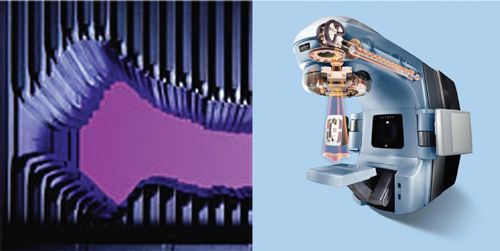

The current use of a multileaf collimator improves both the accuracy and the effectiveness of radiation therapy and reduces the time for every treatment dose, which potentially increases the number of patients treated every day. Conventional low melting alloy blocks should be replaced with MLC for radiotherapy of selected brain and head and neck cancers.

In clinical practice, the MLC can be widely used for the conformal radiotherapy of pelvic and thoracic tumors. The main purpose of the development of multi-leaf collimators is to achieve conformal radiotherapy. Our single MLC-shielded irregular fields measurements also showed several physical and dosimetric disadvantages related to wider effective penumbra than with conventional shielding when the angle between field margin and the normal to the direction of leaf travel is 45 degrees. Finally, the MLC was extensively used in clinical practice for the radiotherapy of different tumors.ĭifferent dosimetric steps were followed to obtain the monitor units/dose ratio. Secondly, radiation leakage through tungsten leaves was measured and compared with the values of low melting alloy blocks. The scalloping effect of isodoses and the effective penumbra produced by the multileaf collimator in an irregular field were analyzed accurately. Since February, 1995, we have studied the dosimetric characteristics and clinical implications of a multileaf collimator of a Clinac 2100 C/D linear accelerator used to replace conventional low melting alloy blocks. Given adequate reliability of the hardware and software, the use of MLC field. In the present paper we discuss the main characteristics of different MLC versions, MLC dosimetric drawbacks and the clinical fields where the MLC could he widely used. 12.1.2 in The Modern Technology of Radiation Oncology, Jacob Van Dyk (ed.). The multileaf collimator (MLC) now commercially available as an integral or optional retrofit component of linear accelerator heads, permitting to shield automatically irregular fields by computerized movements of multiple tungsten leaves.


 0 kommentar(er)
0 kommentar(er)
